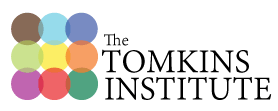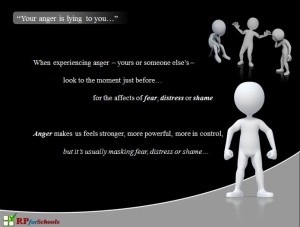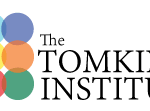Teaching Affect to Teachers
Over the last few months, Graeme George has been teaching affect to teachers as part of the “Restorative Schools” movement in Australia. It is a movement that hopes to introduce schools to restorative practices, which are firmly rooted in a respect for the real emotional needs of human beings.
“My experience has been that teachers ‘get’ Tomkins readily,” said Graeme. “[Teachers] spend so much time talking and working in the cognitive realm that it’s a relief to spend some time in the affective.”
This relief comes in the form of giving teachers tools to make sense of the behavior they see in their students and themselves.
“In working with anywhere between 20 and 150 students every day, we see lots of behaviours, both ours and theirs.” continues Graeme. “And I think we also tend to view behaviour as volitional, even oppositional, and it can come as a relief to view it as affect-driven. Tomkins enables teachers to make a little sense of that chaotic part of their lives.”
But don’t teachers get training for making sense of student behavior? Isn’t that what a degree in education is all about? Graeme says, maybe not. “I find that groups of teachers lap this stuff up. It makes sense to them in ways that whatever psychology they studied in their teacher training probably didn’t.”
A new take on special needs
These teachers engage readily with Tomkins affect theory, and ask questions that extend its implications to urgent aspects of their lives. For example, very frequently in these workshops teachers ask about ADHD and spectrum disorders.
“I usually encourage them to see ADHD kids as ones who have a glitch in their affect system so that too many things at once trigger interest-excitement, and consequently it is their triggering of interest-excitement that acts as an impediment to other I-E, triggering shame affect and Compass of Shame scripts.”
And what about kids on the spectrum?
“With spectrum kids the question usually revolves around the kid’s ability to empathise with other\s–which is where I find it helpful to talk about the cognitive and affective aspects of empathy and that the spectrum kids can still do the cognitive (perspective-taking) but might have trouble with the affective resonance bit.”
Does this framework seem valid to teachers?
“It seems to ‘explain’ or at least describe the acting out that most ADHD kids suffer from,” says Graeme. “And this understanding of kids on the spectrum seems to gel with their experience.”
Immediately applicable
One of the challenges for educators as they seek to improve and expand their skills is that they engage in many, varied professional development workshops. One of the most common questions is, “Yeah, but how do I use this in my real day?” But this content doesn’t trigger that question. According to Graeme, “It seems teachers can immediately see some value from Tomkins so the questions don’t arise.”
Workshop structure
Titled, “Affect and Emotion in the Restorative School,” the workshop is designed to be four hours long, divided into nine sections:
- The Human Emotional System
- Scripts
- The Central Blueprint
- The Moral Emotions
- Affect in Behaviour/Relationship Management
- Affect in Restorative Practices
- Affect in Teaching and Learning
- Shame in the Classroom
- Self Theories about Intelligence
For more information on this workshop and others like it, contact info@tomkins.org.



